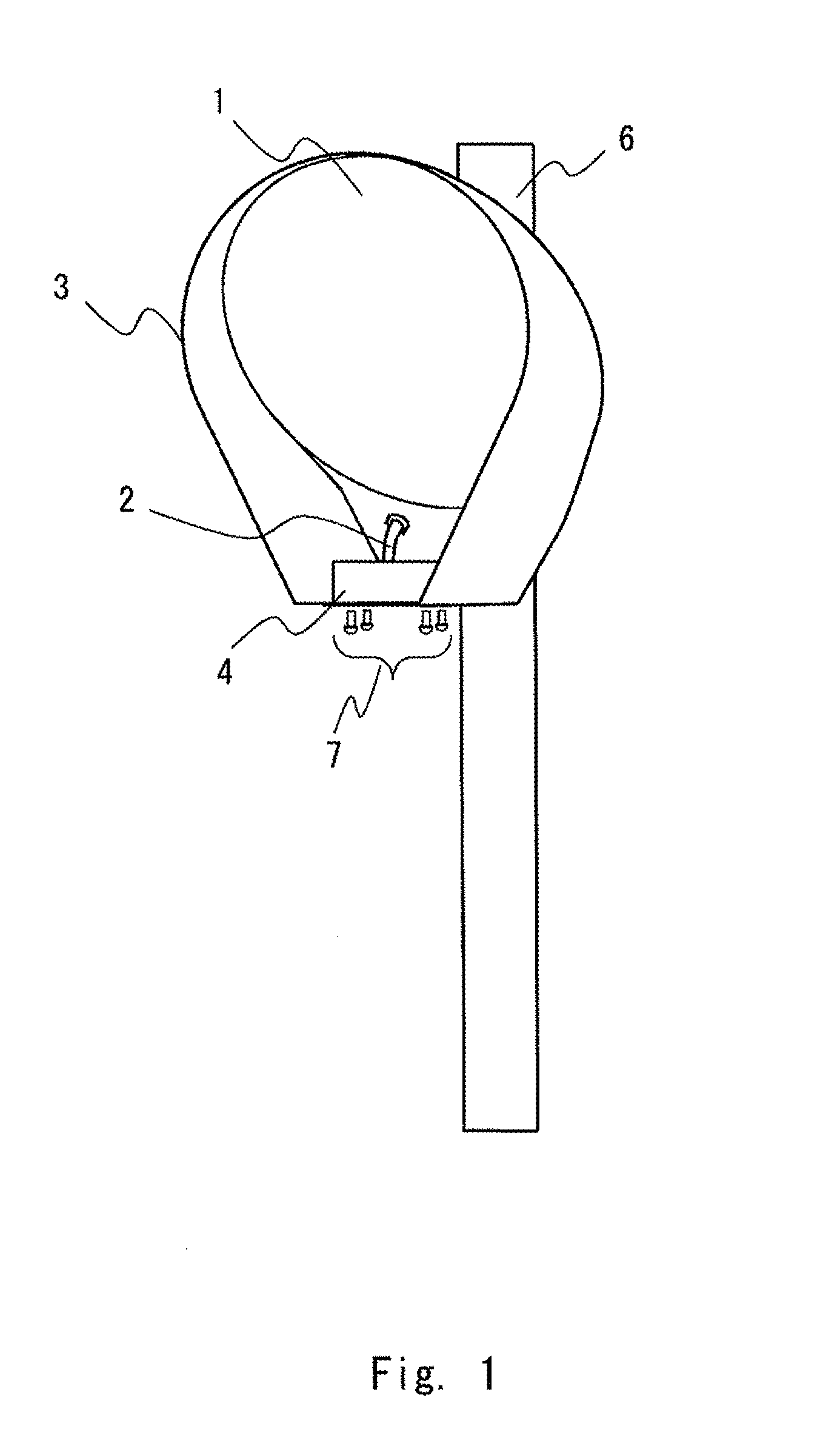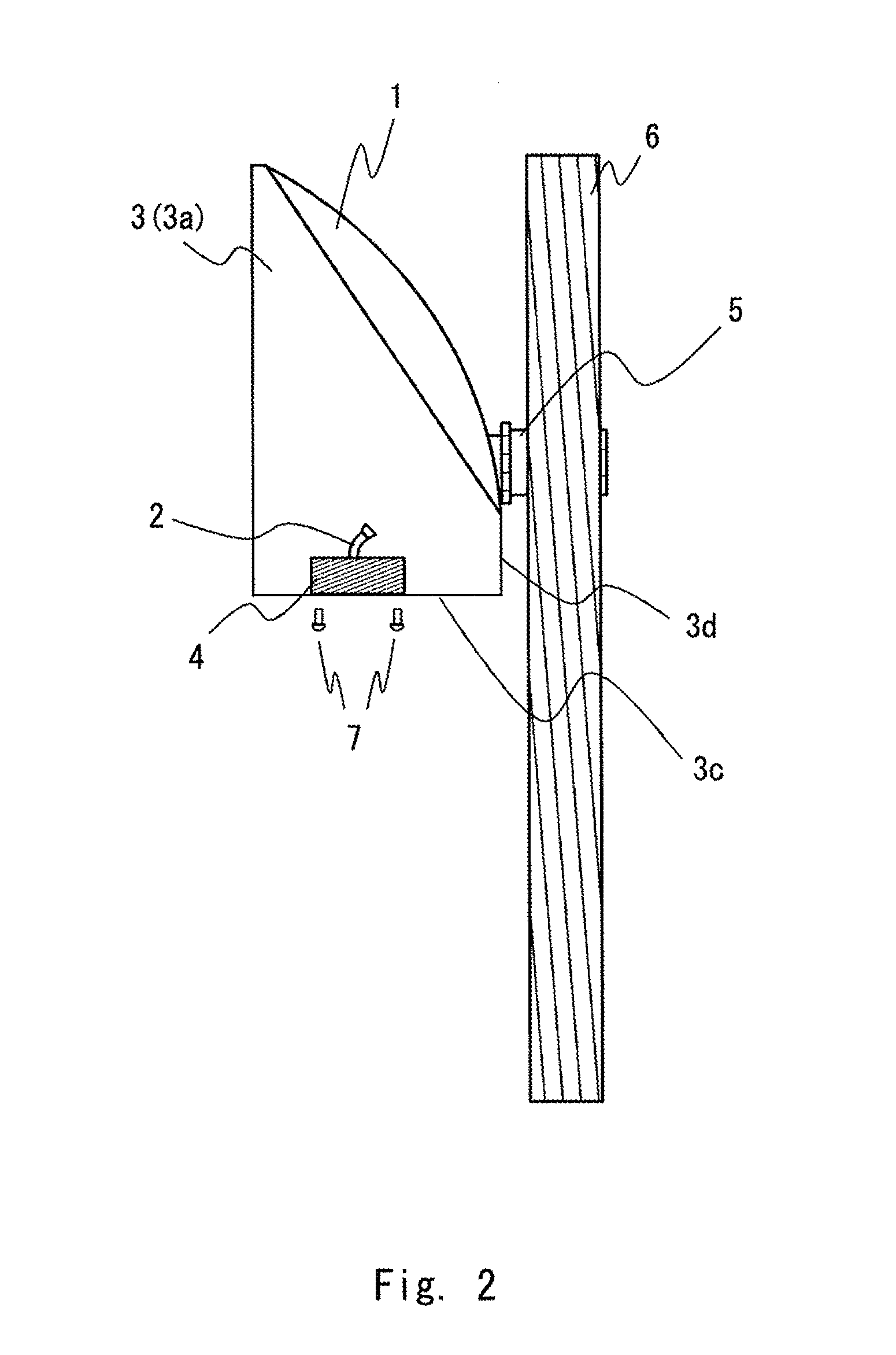Antenna device and method for attaching the same
- Summary
- Abstract
- Description
- Claims
- Application Information
AI Technical Summary
Benefits of technology
Problems solved by technology
Method used
Image
Examples
embodiment 1
[0028]Hereinafter, the embodiments of the present invention will be explained with reference to drawings. FIGS. 1 to 3 show a perspective diagram, a side cross-sectional diagram, and an elevational diagram of an antenna device 10 according to the embodiment 1, respectively.
[0029]The antenna device 10 is specifically an offset parabolic antenna for a point-to-point communication line, and is provided with: an offset reflector 1; a primary radiator 2; a shroud 3; a radio device 4; and an antenna mounting mechanism 5.
[0030]The offset reflector 1 is a circular reflector, and reflects radio waves radiated by the primary radiator 2 in a front direction. An attachment angle of the offset reflector 1 is adjusted so as to reflect the radio waves radiated from the primary radiator 2 in a horizontal direction.
[0031]The primary radiator 2 is a horn antenna formed so that a cross-sectional area of an opening end becomes gradually wider. The primary radiator 2 is arranged outside an antenna openi...
embodiment 2
[0058]An antenna device according to the embodiment 2 is characterized in that a support (a support member) that supports a radio device is further installed inside the shroud 3. Hereinafter, the embodiment 2 will be explained in detail with reference to the drawings. However, explanation of a portion already explained in the embodiment 1 is partially omitted for clarity of the invention.
[0059]FIGS. 4 and 5 show a perspective diagram and a side cross-sectional diagram of an antenna device 20 according to the embodiment 2, respectively.
[0060]As can be seen from FIG. 5, in the antenna device 20, a support plate (support member) 21 is arranged inside the shroud 3. The support plate 21 supports the radio device 4, and is arranged at a lower inside of the shroud 3.
[0061]Here, the support plate 21 is fixed to the antenna mounting mechanism 5. In a method for fixing the support plate 21 to the antenna mounting mechanism 5, it may be fixed by attachment screws as shown in FIG. 5, or a rivet...
embodiment 3
[0071]An antenna device according to the embodiment 3 is characterized by using an ellipse-shaped offset reflector. Hereinafter, the above will be explained in detail with reference to the drawings. However, explanations of portions already explained in the embodiments 1 and 2 are partially omitted for clarity of the invention.
[0072]FIGS. 7 and 8 show a perspective diagram and an elevational diagram of an antenna device 30 according to the embodiment 3, respectively. As can be seen from FIGS. 7 and 8, the antenna device 30 is provided with an ellipse-shaped offset elliptical reflector 31.
[0073]As described above, a shape of a reflector is set to be elliptical, thereby an effect to enhance the low side lobe characteristic can be realized without increasing an antenna opening area, and also there is an effect of enhancing a strength characteristic of wind pressure load resistance.
[0074]Namely, in the embodiment 3, an antenna device becomes vertically long as a whole since the radio de...
PUM
| Property | Measurement | Unit |
|---|---|---|
| Shape | aaaaa | aaaaa |
Abstract
Description
Claims
Application Information
 Login to View More
Login to View More - R&D
- Intellectual Property
- Life Sciences
- Materials
- Tech Scout
- Unparalleled Data Quality
- Higher Quality Content
- 60% Fewer Hallucinations
Browse by: Latest US Patents, China's latest patents, Technical Efficacy Thesaurus, Application Domain, Technology Topic, Popular Technical Reports.
© 2025 PatSnap. All rights reserved.Legal|Privacy policy|Modern Slavery Act Transparency Statement|Sitemap|About US| Contact US: help@patsnap.com



